Year One Topic Review
We ended this week with a review of our previous topic unit, The Great Fire of London. The children were thrilled to welcome some of you to join in the fun and take part in our Great Fire of London quiz.


Everyone worked brilliantly in their teams, answering questions about key events, Samuel Peyps and life in 1666. The children impressed us all with their knowledge and enthusiasm. They proudly showed off their learning, explaining how the fire started, why it spread and how it was eventually stopped!
The children also had the opportunity to show off the painting they have been working on in their new topic, Art. Sharing their knowledge of the artist George Seurat and the style of art he created, pointillism.
Thank you to the parents who joined us—it was lovely to see such teamwork and encouragement. This event was a wonderful celebration of the children’s hard work!
Help at Home:
- Visit your local library to find books about the Great Fire of London.
- Explore online resources together, like videos or interactive timelines.
- Practice timeline skills by talking about events in your child’s own life.
Living and Learning: I can talk about my feelings
This week, we’ve been exploring emotions and how they shape our feelings. We’ve talked about how emotions can change all the time and how it’s completely normal to experience a wide range of them—from anger and fear to happiness and excitement. Emotions are an important part of our mental health, helping us understand ourselves and others.
During our circle time on Monday, we focused on specific emotions: happiness, excitement, worry, and tiredness. Together, we reflected on how each of these emotions feels in our own experiences.
- “I felt worried when I stayed at my cousin’s house, and my mum wasn’t there.”
- “I feel happy when I come to school because I love learning.”
- “I felt excited when I went on holiday.”
- “I felt happy when I had hot chocolate while feeling unwell.”
Today, we became “emotion detectives”! We practiced identifying emotions by studying pictures. We carefully examined facial expressions and body language to decide which emotion best fit each character. It was a fun and insightful way to learn how to recognise feelings in others!


Afterward, we all took turns demonstrating how different emotions might look and feel through facial expressions and body language.

proud

surprised

fear

nervous

sad

happy.
Help at home: Take moments throughout the day to check in with your child and ask how they’re feeling. Encourage them to think about their emotions—what might that feeling look like? Does it have a colour, shape, or even a sound? This can help them better understand and express their emotions.
Pointillism in Year 1
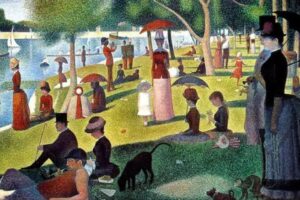
This term, Year 1 have been diving into the wonderful world of George Seurat and pointillism! Last week, we explored Seurat’s paintings, noticing how he used tiny dots to create beautiful scenes. The children were fascinated by how these little dots come together to form a bigger picture.
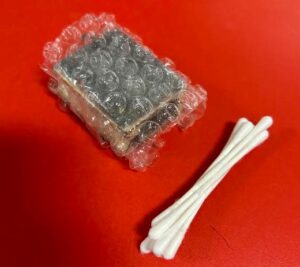
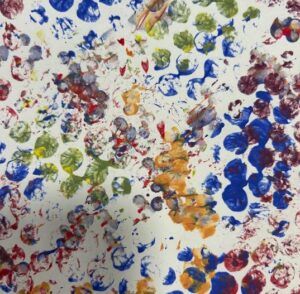
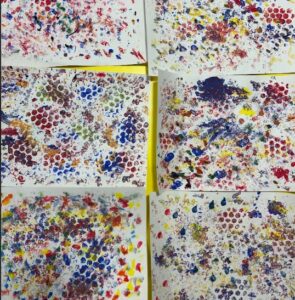
This week, they became pointillist artists themselves! Using bubble wrap and Q-tips, they experimented with primary colours (red, blue, and yellow), dabbing dots of paint to create textured masterpieces. They also explored colour mixing, discovering new shades and tones as the dots overlapped.
Help at home:
- Encourage your child to create dot art using cotton buds or paint brushes.
- Look at nature – leaves, flowers, or clouds – and discuss how tiny details create a whole picture.
Science: Materials
This term, our Science topic is Materials. Today, we explored a variety of rocks, observing and describing their texture, colour, size, and shape. We also considered how different types of rocks might be used in real-life.
Here are some of the ideas we discussed:
- “We could use this rock to build a house or a wall.”
- “This one could be used to make a table or a bench.”
- “This type of rock would be great for carving a statue.”
- “Some rocks are perfect for kitchen worktops because they’re hard and strong.”
We compared the rocks, noting their similarities and differences. For example:
- Some rocks were smooth, while others were rough.
- Certain rocks were heavier, and some were much lighter.
Finally, we sorted the rocks based on their size and then texture, arranging them from rough to smooth. It was fascinating to see how varied and versatile these natural materials can be!






Help at home: Go on a materials hunt at home! Look around and see if you can find objects made from different materials e.g wood, plastic, rock, or metal. Use the key vocabulary below to help you describe the items you discover. What textures, colours and uses can you identify? Happy exploring!

Gymnastics in Year One
This week in PE, Year One started their gymnastics unit! The children have been exploring how their bodies can move in low positions, thinking about balance, coordination, and creativity. Some brave gymnasts have even challenged themselves to try forward rolls.




To be creative, the children thought about how animals move and worked on imitating these movements. They practiced slithering like snakes, hopping like frogs, and crawling like bears. Everyone worked hard to move with control, especially when traveling in straight lines. What a fantastic start to gymnastics!
Help at Home Tips:
- Encourage your child to practice moving in different low positions at home—can they crawl under a table or slither across the carpet?
- Play a game of “Animal Moves” and guess which animal they’re imitating!
Living and Learning: Odd Socks Day and Anti-Bullying Day
We started anti-bullying day with our odd socks. We wore odd socks to celebrate that we’re all unique and different in some way. This sends an important message that we’re all allowed to be ourselves, free from bullying and helps us to celebrate anti-bullying in a fun and positive way.
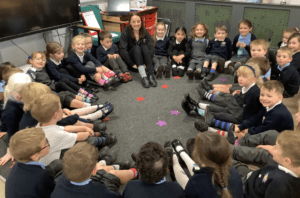
We explored our school definition of bullying, created by our junior leaders, by looking at what some of the words meant.

What are the different types of bullying?
Our school definition helped us understand the different types of bullying – physical (hurting our body), emotional (hurting our feelings) or cyber bullying (online).
The children thought about who they would tell if they needed to Start Telling Other People.
Help at home: discuss our school definition of bullying with your child. Do they know the difference between falling out and bullying, and between a one-off situation and something that’s happened more than once?
English: Michael Rosen Day
Today, we celebrated Michael Rosen Day with a live webinar, where we had the pleasure of hearing him read some of his incredible poetry. He also shared inspiring insights and useful tips on writing poetry.
We especially enjoyed his reading of Hot Food. It was fascinating to learn how this poem brings back memories of his family, almost like a photo album playing in his mind as he reads it.

Help at home: Read the poem aloud together and make it interactive by encouraging your child to act out parts of the poem or create movements for certain words.


Me and My Community Theme Week
Me and My Community Week
Wetherby Brass Band
On Tuesday, we were lucky to have a visit from Steven from Wetherby Brass Band. He spoke to the whole school about the benefits of playing in a band and being part of a community within the Wetherby community.
Steven, brought in some instruments and some of us were lucky enough to play some of them – some made hilarious noises.







The band play during many events in the Wetherby community, including the Remembrance Parade. They also play every Sunday at 2.30-4.30pm from the end of April to the end of September.
Bonfire Night Safety
We hope you have a lovely time if you are going out tonight to celebrate Bonfire Night and watch some fireworks.
Please remember the top tips we talked about in class today to help keep you safe:


